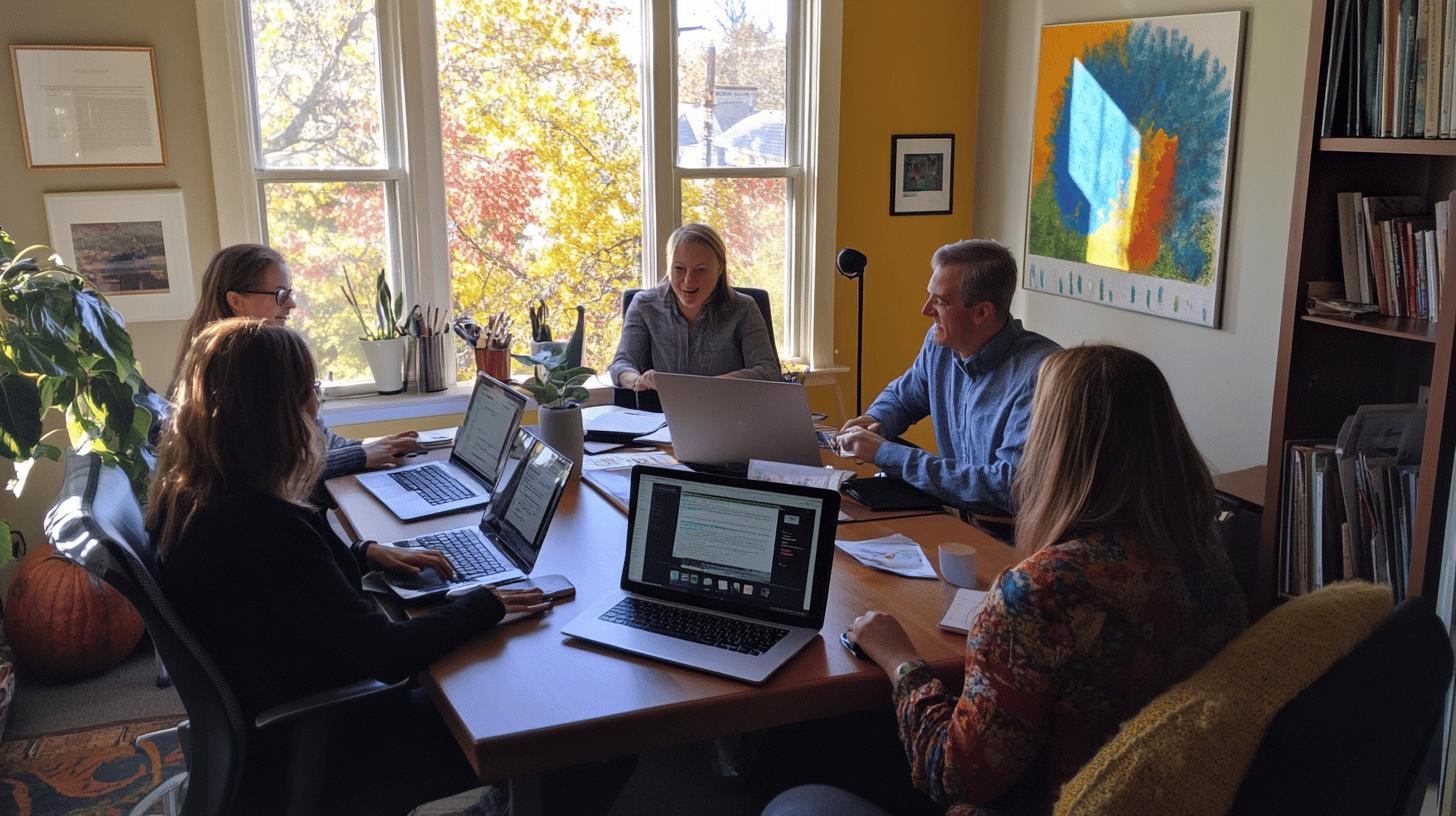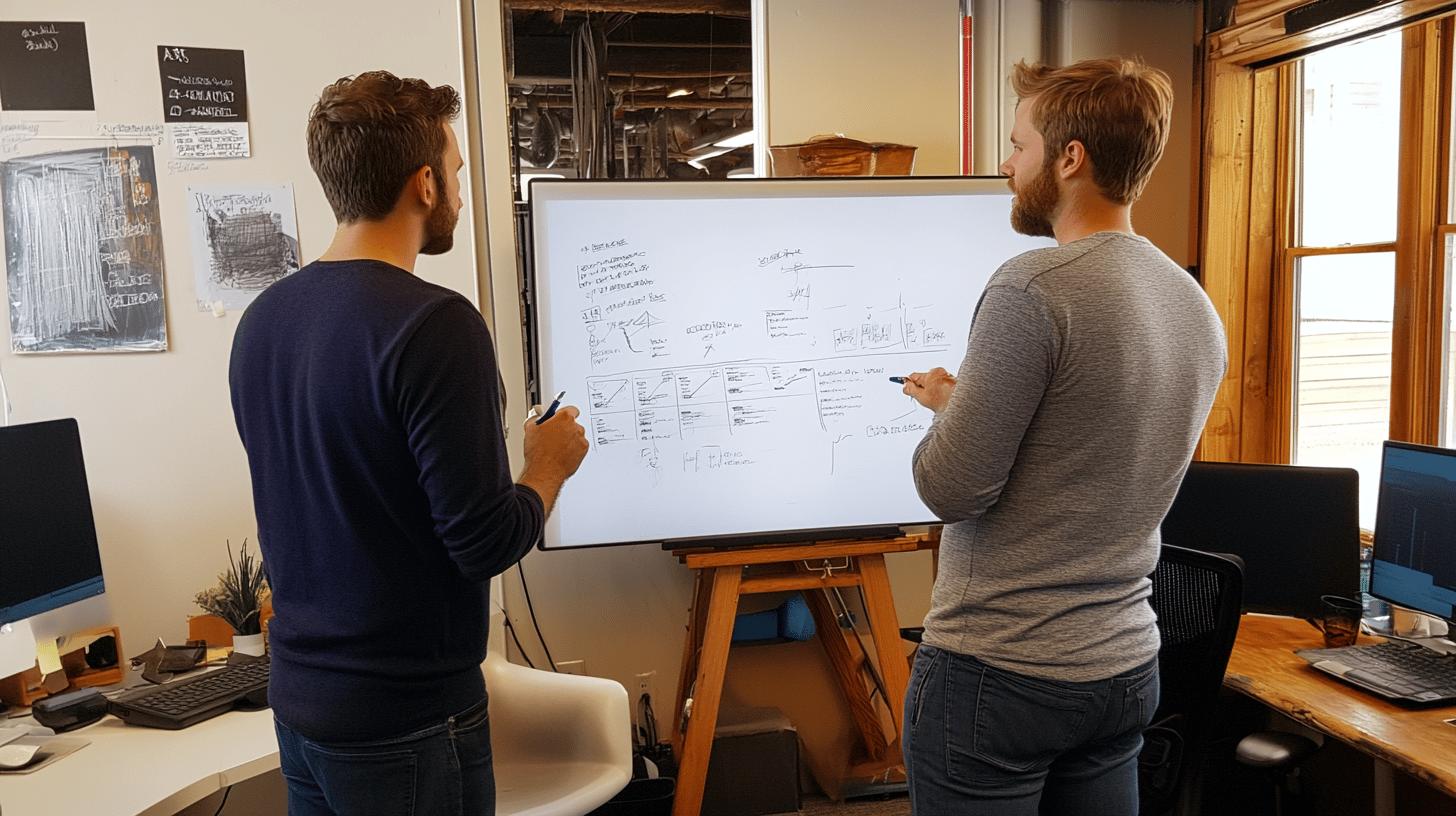In a world flooded with digital interactions, genuine connections within communities are more important than ever. Building community bonding programs offers a revitalizing approach to enhance real connections by laying the groundwork for inclusivity, trust, and lasting relationships. These structured initiatives are not just about gathering people together—they're about fostering social cohesion through targeted activities that align with the diverse needs of community segments. With thoughtful planning, goal setting, and a blend of traditional and modern tools, such programs can transform how communities interact and collaborate. Journey stands at the forefront, supporting these connections with real-time communication and feedback mechanisms. Dive into the foundations of creating impactful community bonding programs and discover how you can nurture authentic social interactions in your community.

Building community bonding programs begins with careful planning and a clear understanding of the diverse needs within a group. These programs are designed to enhance social cohesion by fostering genuine connections and inclusivity through targeted activities. Critical to this endeavor is setting measurable goals that align with the community’s purpose. Incorporating trust-building exercises and effective communication techniques serves as the backbone for cultivating meaningful interactions. Structured programs that blend traditional methods with modern tools consistently yield richer engagement and stronger bonds among members. Journey supports this process by providing a well-maintained, vibrant platform that enables community owners to create customized spaces tailored to their members’ interests. Its seamless communication channels, including group chats and community feeds, encourage continuous participation and discussion. Journey’s AI-powered Sidekick further enhances these efforts by automating moderation, offering personalized content recommendations, and facilitating community feedback loops. Together, these features make Journey a central hub for cultivating authentic social connections, empowering communities to grow organically while safeguarding trust and security. By leveraging Journey’s robust tools and strategies, community bonding programs can achieve long-term success and enrich members’ experiences.

Successful community bonding hinges on engagement strategies that foster meaningful interaction and a sense of belonging. Consistent scheduling of group events creates a reliable rhythm, encouraging members to participate regularly. Inclusive event planning ensures activities resonate with diverse interests, making everyone feel valued and welcomed. Implementing trust-building exercises is crucial; these activities deepen connections by promoting openness and mutual respect. Incorporating interactive icebreakers helps break down barriers, allowing members to share experiences and discover common ground. Open discussion forums provide safe spaces for authentic dialogue, nurturing empathy and understanding. Diverse activities—ranging from workshops to social gatherings—keep the community vibrant and engaging. Journey serves as a central hub that enhances these strategies by enabling seamless coordination and communication. Its well-maintained platform allows members to receive timely updates, join group chats, and participate in discussions tailored to their interests. Journey’s robust tools and AI Sidekick support community owners in organizing events efficiently while fostering continuous interaction. This seamless integration of engagement tactics with technology enriches the community experience and sustains long-term growth.


Digital tools have become the backbone of effective community bonding programs, enabling faster communication and richer interaction among members. Platforms like Journey serve as a central hub where communities can thrive through seamless integration of essential features. Journey’s well-maintained environment supports community owners by simplifying event organization with built-in calendars and RSVP tools. Members receive real-time community updates that keep them engaged and informed about upcoming activities and discussions. This level of discoverability encourages participation and sustains long-term interest. The platform’s robust content management allows sharing of diverse media—text, images, videos—while its AI-powered moderation safeguards a safe and trustworthy space. Group chats and direct messaging foster focused, meaningful conversations, enabling members to interact in ways that align with their interests and goals. Journey also provides digital feedback systems that empower community owners to gather insights and continuously refine their programs. This continuous loop of communication and adjustment ensures activities remain relevant and fulfilling. Key benefits of integrating Journey into community bonding programs include:

Creative collaboration methods breathe new life into community bonding programs, fostering rich interaction and deepening connections among like-minded individuals. Moving beyond traditional events, incorporating innovative activities can make bonding efforts more fulfilling and inclusive. Themed cultural exchange programs offer an immersive way for members to share traditions, stories, and experiences from their backgrounds. These events encourage empathy and broaden understanding, strengthening the essence of community. Interactive workshops—such as arts and crafts sessions or collaborative cooking events—invite members to engage hands-on, sparking creativity and teamwork. These formats also provide opportunities for learning and skill-sharing, which enrich member profiles and contributions. Intergenerational mentorship initiatives connect diverse age groups, blending seasoned wisdom with fresh perspectives. This approach fosters mutual respect and long-term growth, supporting both personal development and community resilience. Additional ideas to inspire vibrant bonding programs include:
-4%20(1).png)
Well-planned community bonding programs consistently yield rich, rewarding outcomes. Several case studies showcase how targeted initiatives foster trust, improve communication, and build lasting local support networks.
Program NameFocus AreaNeighborhood UnityVolunteer & Trust-BuildingCulture ConnectCultural Exchange & WorkshopsDigital BridgesOnline Community EngagementNeighborhood Unity focused on volunteer activities paired with trust-building exercises. This program witnessed a 40% increase in active participation over six months and received high feedback scores emphasizing stronger interpersonal bonds. Leadership development played a crucial role, with seasoned volunteers guiding newcomers and fostering a vibrant, inclusive environment. Culture Connect centered on cultural exchange events and interactive workshops. It successfully expanded member profiles by integrating diverse backgrounds and experiences, fostering mutual understanding. Participants reported enhanced communication skills and a greater sense of belonging, highlighting the program’s impact on social cohesion. Digital Bridges leveraged online platforms to enable community engagement remotely. This program used structured discussions and digital events to overcome geographic barriers, expanding community reach by 55%. The initiative enhanced leadership skills by training community owners to utilize digital tools effectively, creating a safe and trustworthy virtual environment. Journey’s robust platform has been integral to these successes. It supports community owners with seamless event organization, customizable member roles, and real-time updates that encourage ongoing participation. The AI Sidekick enhances communication by moderating content, recommending relevant discussions, and facilitating feedback loops. Journey’s well-maintained environment provides a central hub where members can connect, share resources, and actively participate in shaping their community’s growth. These case studies highlight how integrating thoughtful planning, leadership development, and technology-driven tools like Journey can enrich community outreach planning and build resilient local support networks.

Community bonding programs often face hurdles like interpersonal conflicts, miscommunication, and uneven participation. These challenges can hinder the growth and vibrancy of a group if not addressed effectively. Recognizing these obstacles early is crucial to maintaining a safe and trustworthy environment where all members feel valued. Implementing conflict resolution strategies such as structured dialogues and mediation sessions encourages open communication and mutual understanding. Providing regular feedback opportunities creates a continuous loop for members to express concerns and suggest improvements, which fosters inclusivity and transparency. Effective communication techniques—like clear guidelines, active listening, and empathetic responses—serve as the backbone for resolving misunderstandings and strengthening relationships within the community. Encouraging diverse participation ensures that different perspectives are heard, enriching interactions and promoting a sense of belonging. Platforms like Journey support these efforts by offering robust moderation tools and AI-powered assistance to monitor discussions and detect potential conflicts early. Journey’s well-maintained environment enables community owners to seamlessly manage conversations, provide timely updates, and facilitate feedback sessions. Its AI Sidekick acts as a guide, helping to maintain harmony and encouraging positive interaction, which is critical for overcoming challenges and sustaining long-term engagement.

Sustainable community practices are becoming crucial for long-term success in bonding programs. Communities that embrace adaptability and continuous improvement build resilience and foster lasting connections among members. Incorporating eco-friendly methods and inclusive approaches not only enriches the experience but also aligns with growing social responsibility trends. Planning for community resilience involves designing programs that can evolve organically with changing member needs. This requires robust feedback loops and flexible structures that encourage diverse participation. Sustainable practices prioritize resource sharing and minimize environmental impact, creating a vibrant, safe, and trustworthy environment that supports growth. Emerging trends shaping the future of community bonding include:
Building community bonding programs requires attention to detail and a foundation of trust. Essential strategies like structured engagement activities and innovative use of technology foster genuine connections. Journey's digital tools offer seamless integration for planning and feedback, enhancing program success. With careful implementation of sustainable practices and continuous adaptation, communities can strengthen over time. Embracing these approaches leads to enriched social interactions and lasting community impact. By focusing on effective strategies, communities will thrive and create meaningful bonds.
Free building community bonding programs can include volunteer-led initiatives, local partnership activities, and virtual social forums. These programs often utilize existing resources to foster inclusivity and enhance social cohesion.
Building community bonding programs PDFs are often available through community centers, online resource libraries, and nonprofit organization websites. They provide structured guidelines and activity ideas for effective community engagement.
Team building activities for small groups include interactive icebreakers, trust-building exercises, and collaborative problem-solving games. These activities foster close-knit connections and effective communication, enhancing group dynamics.
Community building activities for students promote inclusivity, teamwork, and communication skills. Engaging in workshops and cultural exchanges helps students connect, learn from diverse perspectives, and build stronger social networks.
The best building community bonding programs are those that are well-planned, inclusive, and adaptable. They focus on specific community needs and include diverse activities such as cultural nights, volunteer opportunities, and trust exercises.
Yes, programs for building community bonding among adults include social gatherings, skill-sharing workshops, and volunteer projects. Activities promoting trust and effective communication are essential in creating meaningful adult interactions.
Team building activities suitable for adults include structured communication exercises, role-playing scenarios, and problem-solving games. These activities encourage collaboration, trust, and a deeper understanding among participants.
Team building activities foster better work environments by improving communication, building trust, and enhancing collaboration. These activities support a healthy workplace culture where employees feel valued and more connected to their teams.